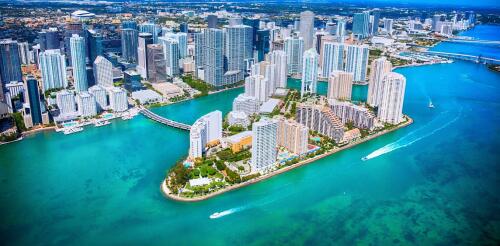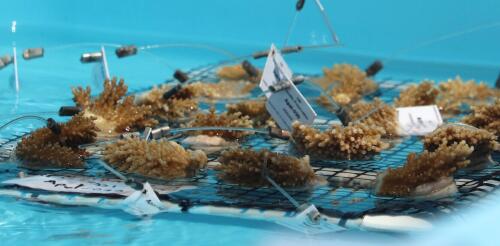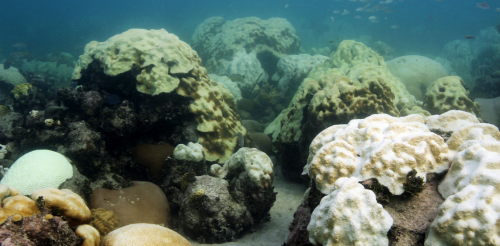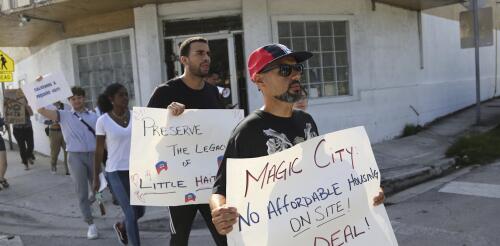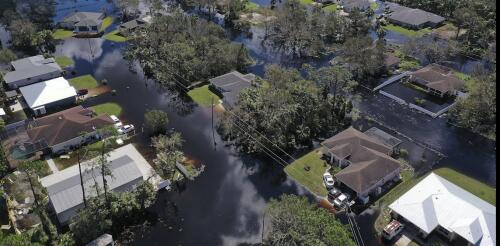South Florida
PFAS, the “forever chemicals” that have been raising health concerns across the country, are not just a problem in drinking water. As these chemicals leach out of failing septic systems and landfills and wash off airport runways and farm fields, they can end up in streams that ultimately discharge into ocean ecosystems where fish, dolphins, manatees, sharks and other marine species live. We study the risks from these persistent pollutants in coastal environments as environmental analytical chemists at Florida International University’s Institute of the Environment. Because PFAS can enter the food chain and accumulate in marine plants and animals, including fish that humans eat, the spread of these chemicals has ecological and human health implications. Biscayne Bay and nearby coastal areas are teeming with fish, including many varieties that people eat. NPS image by Shaun Wolfe I...
Armed with scrub brushes, young scuba divers took to the waters of Florida’s Alligator Reef in late July to try to help corals struggling to survive 2023’s extraordinary marine heat wave. They carefully scraped away harmful algae and predators impinging on staghorn fragments, under the supervision and training of interns from Islamorada Conservation and Restoration Education, or I.CARE. Normally, I.CARE’s volunteer divers would be transplanting corals to waters off the Florida Keys this time of year, as part of a national effort to restore the Florida Reef. But this year, everything is going in reverse. As water temperatures spiked in the Florida Keys, scientists from universities, coral reef restoration groups and government agencies launched a heroic effort to save the corals. Divers have been in the water every day, collecting thousands of corals from ocean nurseries along the Florida Keys reef tract and moving them to cooler water and into giant tanks on la...
The water off South Florida is over 90 degrees Fahrenheit (32 Celsius) in mid-July, and scientists are already seeing signs of coral bleaching off Central and South America. Particularly concerning is how early in the summer we are seeing these high ocean temperatures. If the extreme heat persists, it could have dire consequences for coral reefs. Just like humans, corals can handle some degree of stress, but the longer it lasts, the more harm it can do. Corals can’t move to cooler areas when water temperatures rise to dangerous levels. They are stuck in it. For those that are particularly sensitive to temperature stress, that can be devastating. A transplanted coral in the Port of Miami that was healthy in early 2023 had bleached in the warm water by July 11, 2023. NOAA/University of Miami I lead the Coral Program at the National Oceanic and Atmospheric Administration’s Atlantic Oceanogra...
Miami’s Little Haiti has been an immigrant community for decades. Its streets are lined with small homes and colorful shops that cater to the neighborhood, a predominantly Afro-Caribbean population with a median household income well below Miami’s. But Little Haiti’s character may be changing. A $1 billion real estate development called the Magic City Innovation District is planned in the neighborhood, with luxury high-rise apartments, high-end shops and glass office towers. Little Haiti’s streets have been lined with murals and mom-and-pop shops for generations, but that’s changing. Joe Raedle/Getty Images The developers emphasize their commitment to sustainability. But high-end real estate investments like this raise property values, pushing up property taxes and the cost of living for surrounding neighborhoods. The potential effect on shops and homeowners and on t...
Hurricane Ian’s widespread damage is another disaster for Florida’s already shaky insurance industry. Even though home insurance rates in Florida are nearly triple the national average, insurers have been losing money. Six have failed since January 2022. Now, insured losses from Ian are estimated to exceed US$40 billion Hurricane risk might seem like the obvious problem, but there is a more insidious driver in this financial train wreck. Finance professor Shahid Hamid, who directs the Laboratory for Insurance at Florida International University, explained how Florida’s insurance market got this bad – and how the state’s insurer of last resort, Citizens Property Insurance, now carrying more than 1 million policies, can weather the storm. What’s making it so hard for Florida insurers to survive? Florida’s insurance rates have almost doubled in the past five years, yet insurance companies are still losing money for three main reasons....
